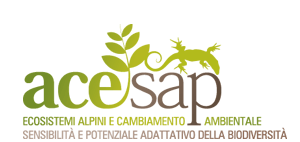BIBLIOGRAFIA |
| BENOIT J.B., LOPEZ-MARTINEZ G., ELNITSKY M.A., LEE R.E., DENLINGER D.L. |
| 2009 |
| Dehydration-induced cross tolerance of Belgica antarctica larvae to cold and heat is facilitated by trehalose accumulation. |
| COMP.BIOCHEM.PHYSIOL., A MOLECULAR & INTEGRATIVE PHYSIOLOGY |
| ELSEVIER 2009. |
| 152(2009):518-523 |
| FIGG.6 |
| ZOOLOGIA |
| Larvae of the Antarctic midge, Belgica antarctica (Diptera: Chironomidae), are frequently exposed to dehydrating conditions on the Antarctic Peninsula. In this study, we examined how rates and levels of dehydration alter heat and cold tolerance and how these relate to levels of trehalose within the insect. When dehydrated, larvae tolerated cold and heat stress more effectively, although resistance to cold was more pronounced than heat resistance. Slow dehydration was more effective than rapid dehydration in increasing temperature tolerance. Severe dehydration (50% reduction in water content) caused a much greater increase in temperature tolerance than did mild dehydration (e.g. 10% water loss). Larvae severely dehydrated at a slow rate (98% RH) were more temperature tolerant than those dehydrated quickly (0 or 75% RH). These results indicate that the slower dehydration rate allows the larvae to more effectively respond to reduced water levels and that physiological adjustments to desiccation provide cross tolerance to cold and heat. Levels of trehalose increased during dehydration and are likely a major factor increasing subsequent cold and heat resistance. This hypothesis was also supported by experimental results showing that injection of trehalose enhanced resistance to temperature stress and dehydration. We conclude that changes in temperature tolerance in B. antarctica are linked to the rate and severity of dehydration and that trehalose elevation is a probable mechanism enhancing this form of cross tolerance. |
 Dehydration-induced cross( 679 KB)
Dehydration-induced cross( 679 KB)





